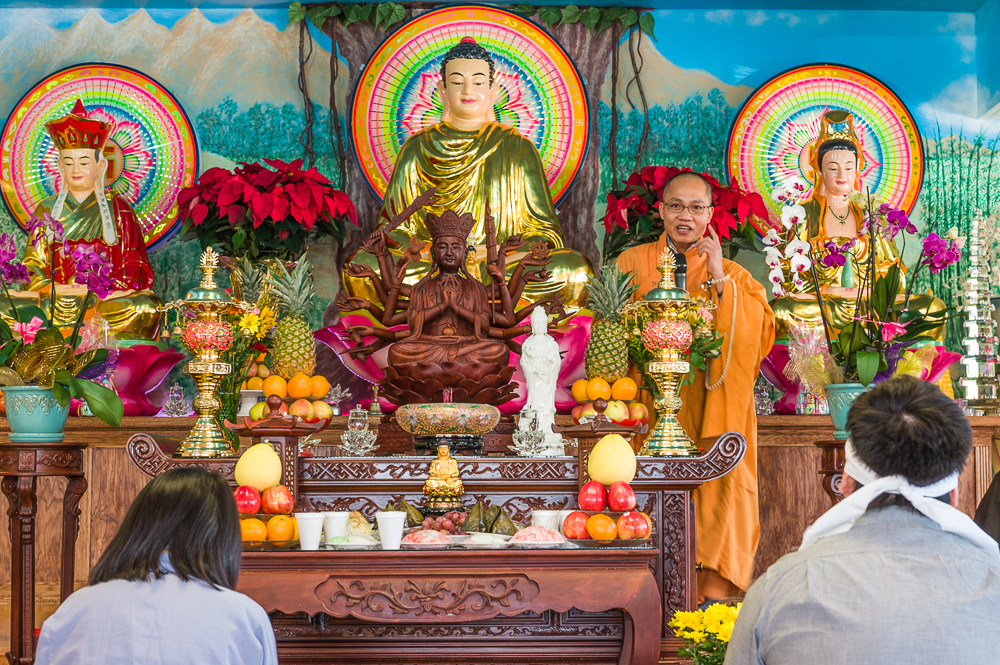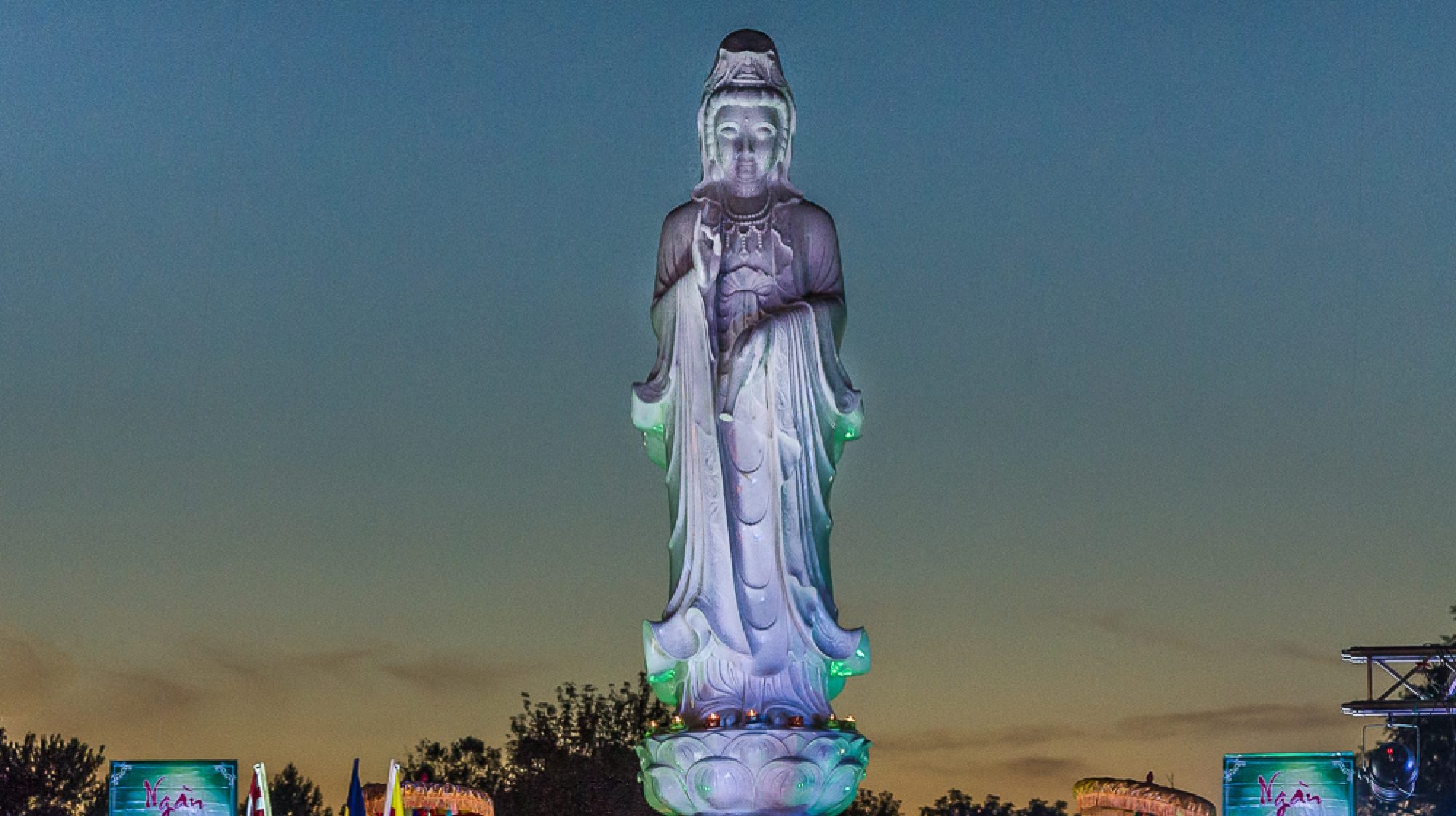
CONTACT
Address: 5906 SW 9th St, Des Moines
Leader: Thay (a term of veneration for Vietnamese Buddhist monks)
Phone number: 515-256-8176,
Email: tuvienhongduc@yahoo.com
Facebook: https://www.facebook.com/TVHD2009
HOURS
2-4 pm every Sunday
ETIQUETTE
Remove shoes
Dress modestly
Do not point outstretched legs (soles of feet) at sacred objects (altars, statues) or people (monks, nuns)
STUDENT TESTIMONIAL
By: Natasia
History
In 1975, Governor Robert Ray invited over 2000 Tai Dam people to Iowa from Laos. Later, in 1979, Governor Robert Ray helped victims of the Vietnam War settle again. This time it was South Vietnamese people. This community originated in a house on 27th Street, and in 1998 they established their own temple, Chua Hong An, on Martin Luther King Boulevard. In 2007 the community gained a new facility that offered them room to grow on Southwest 9th Street.
Practices/Services
Weekly service from 2-4 pm every Sunday. This service consists of dharma talks and chanting meditations. Thay believes that the Pure Land is right here, so the community must work to manifest its reality. Also, those devoted to Amita Buddha, the Buddha of immeasurable light and life, who chant his name, will be reborn in his pure land upon death, where it is much easier to attain final nirvana.
Distinctive Qualities
The temple includes a classroom where the younger population learns Vietnamese Buddhism as well as their traditional language and culture. There is also a tea room that is dedicated to visitors. Also, Thay, the head monk, has his own suite. This temple has a statue of Siddhartha Gautama who is the historical Buddha. On the grounds is a 40-foot statue of Quan Am, as well as dozens of other Buddhist statues.
Demographics
This community is mostly made up of Vietnamese people.
Branch
This community practices Mahayana, which is a form of Buddhism practiced in East Asia. More specifically this community practices a mixture of Pure Land and Zen Buddhism.

